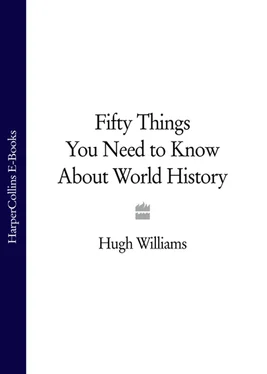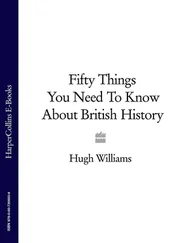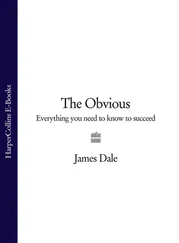From the fall of the Roman Empire to the beginning of the Renaissance, the centre of the world lay in the East.
The Emperor who dismissed the British expedition with such disdain was Qianlong. He was a member of the Manchu or Qing dynasty that ruled China from the middle of the seventeenth century until the end of imperial rule in 1911. China was first united under a dynasty that existed nearly 2,000 years earlier, the Qin (pronounced ‘Chin’) from whom the name ‘China’ originally derives. The last emperor in this line went to his grave in 210 BCsurrounded by the famous terracotta army, one of the world’s most exciting archaeological finds of the twentieth century. Although the Qin emperors only held power for fifteen years, the unification of the country under one government was an enormous, if bloody and ruthless, achievement. China did not enjoy the same measure of centralisation again until the second century AD,when first the Sui and then the Tang dynasties came to power. The Sui used the same repressive techniques as the Qin to gain control of all China’s lands. When they fell, their successors, the Tang, ruled for nearly 300 years, ushering in a period of growth and civilised development. It was during this period, from the beginning of the sixth century to the start of the ninth century AD,that the city of Chang’an became the greatest in the world.
The history of mankind from the Middle Ages to the present day has been in the main the history of a European civilisation. But before then, in the time between the fall of the Roman Empire to the beginnings of the Renaissance, the centre of the world lay in the East. When the city of Rome was at its height its population stood at around a million people. By 800 AD,when Chang’an was thriving, it had been reduced to no more than 50,000. The biggest city in Europe at this time was Córdoba in southern Spain, with a population of something in excess of 150,000. It was not really ‘European’ at all, but the capital of an Arab dominion, a caliphate that controlled most of the lower part of the Iberian peninsula. That part of Europe had fallen to a foreign power as the Moors, inspired by the world’s newest religion of Islam, pushed out from their original homelands in North Africa. Other European cities were tiny by comparison. London probably had a population of no more than 10,000.
It was a teeming, cosmopolitan city.
Chang’an was a teeming, cosmopolitan city. High walls protected the inhabitants and no one except imperial messengers could enter or leave during the night when the city gates were locked and a strict curfew was enforced. The town was constructed on a grid with broad roads running either north to south or east to west. Speed restrictions applied to coachmen and riders on horseback. There were five canals that carried merchandise all over the town and delivered water to its parks and fed the lakes in the gardens of the nobility. Within this framework, Chang’an was divided into sections, each with its own walled boundary and housing its own complement of homes, offices, temples and workshops. The curfew applied here too: once its drumbeat sounded at the end of the day, the gates dividing the different areas were closed and movement between them was forbidden. A night patrol called the Gold Bird Guard enforced the law, capturing and beating those who disobeyed. There was a government office, a walled compound from which the Emperor’s representative read imperial decrees to the city’s seniors who stood before him in carefully designated ranks. There were many monasteries – fabulously wealthy places endowed by rich aristocrats or the Emperor himself – whose splendid pagodas dominated the city skyline. The pagoda was a form of architecture developed by the Chinese from an Indian design. Today the Giant Wild Goose Pagoda and the Small Wild Goose Pagoda – one 210 feet high, the other 141 feet – still stand in the modern Chinese city, renamed X’ian (‘Western Peace’), memorials to an age 1,300 years ago when the landscape they survey was the most prosperous in the world. The ancient city had beautiful parks, generally off limits to ordinary citizens, but places where the rich and well connected could go to enjoy the countryside or feast in tents that protected them from the spring rain. It also boasted a ‘red-light district’ where madams offered girls as young as eleven or twelve to their customers and courtesans entertained members of the imperial court and well-heeled merchants.
It became the greatest city in the world.
The wealth of the city was based on its markets. Chang’an had two, both of which were strictly controlled by a government agency that registered merchants, inspected the currency for counterfeit coins and imposed regulations relating to weights and measures. Some sold goods imported from all over the world – precious stones, silks and sacred relics. Others had more everyday produce on sale such as meat, vegetables, fish and herbs. There were restaurants where customers could enjoy pastries and other delicacies and moneylenders were available to advance cash to those who needed it. There was also a primitive banking system. For a fee, certain traders would take charge of citizens’ valuables giving them pieces of paper as proof of their deposits. The owners could then use these as a method of financing other purchases, in effect using a sort of paper currency. Many of the traders came from Central Asia – from the lands that now encompass countries such as Kazakhstan and Uzbekistan – and from Persia. It is also probable that the city had a number of night markets, today a normal feature of life in many large Asian cities, even though the authorities, who liked to impose restrictions on the movement of city dwellers after dark, disapproved of them. The Han dynasty poet Ban Gu described the busy scene as follows:
In the nine markets they set up bazaars, Their wares separated by type, their shop rows distinctly divided. There was no room for people to turn their heads, Or for chariots to wheel about. People crammed into the city, spilled into the suburbs, Everywhere streaming into the hundreds of shops.
Merchants sold precious stones, silks and sacred relics.
The blossoming of Chang’an coincided with another important feature in Chinese history – a shift of population from north to south. China’s geography is dominated by its two great rivers: the Yellow River in the north and the Yangzi in the south. The Yellow River is prone to disastrous flooding and could wash away agricultural farmland devastating the livelihoods of peasants farming in the region. The area around the Yangzi is much drier and naturally less suitable for growing staple crops such as rice. But by the time of the Tang dynasty the techniques for irrigating paddy fields had become established (the Chinese imported them from Southeast Asia) and the population began to drift southwards. Today the majority of the country still lives in its southern part. In this way the nature of Chinese society for hundreds of years to come began to take shape, an enormous peasant population controlled as tightly as possible by a highly efficient and cultured bureaucracy.
Inevitably it sometimes broke down. The dynasties that ruled this great land did not succeed one another effortlessly, and the country succumbed to rebellion and disruption on many occasions. But it always grew, a growth that seemed to take it more into itself as it became stronger and bigger. Bureaucracy tends to dislike change – its very purpose is to preserve continuity – and this dependence on maintaining the status quo became typical of the way China chose to govern itself. Traders and travellers still managed to penetrate its heart, but their journeys were long and dangerous and the traffic always went in one direction. As Earl Macartney found to his cost a thousand years after the boom years of Chang’an, the Chinese did not feel the need to look much beyond their own immediate frontiers. No wonder he chose to describe the country as an ‘old, crazy first-rate Man of War’, overawing its neighbours merely by its ‘bulk and appearance’.
Читать дальше












